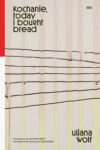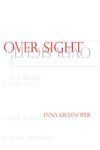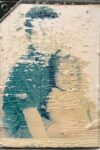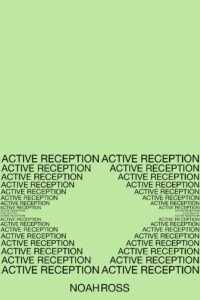
[Nightboat Books; 2021]
Noah Ross’ Active Reception makes a raucous mess of sound and sense as part of its queer project of seeking kinship and pleasure within capitalism. While reading, I kept hearing Douglas Kearney’s opening to Mess and Mess and (Noemi Press 2018). Kearney recounts a question asked about the difference between poetry and rhetoric, to which he responds: “One holds an argument as snake handlers might a diamondback. The rhetorician grips, securely, the scaly collar, ensuring the serpent doesn’t bite. The poet, however, may find purchase further down the spine, leaving the viper free to writhe, to strike” (emphasis mine). From the first page of Ross’ collection, I am struck by its writhing, the fluid in-line and enjambed slippage from thought to thought, so that any “argument” works within a frequency attuned away from closure or epiphany, and towards a felt experience of the connective tissues between speaker, language, reader, and the material conditions of our shared world. Not only the connective tissue, but what might be beyond it, beyond any tendency towards domination: “can we exist / outside power or past the fringes of acceptable speech.”
It is this drive towards different modes of being which seems to crucially inform Ross’ poetics and the forms these poems take. Throughout the book, these forms shift and coagulate only to fall apart before reforming, from dense prose blocks spliced with forward slashes and commas, to narrow columned poems hovering above footnote-like text which sprawls pages, to extra-alphabetic markers forming their own structures in lieu of legible language. Due in part to the rapid shifting of form, reading is a slow — but immensely pleasurable — process, even as Ross’ short syntactical structures goad me towards rapid-fire connections and associations. A very tightly figured poem like:
/
frum the tips
of the tips of
fresh sinew l
end a tendon
lest a hair rest
untangled do
ugh of knots
read the code
of shield may
it op/ /en/
might carry me swiftly through, but offers and enacts multiple points of spillage (via partial rhyme, enjambment, and the visual wrest “op/ /en”.) At one point, the speaker calls forth “a rejection of closure / a novel opening / of the bow / els of the bottom / of the page / of the syllable,” thus calling forward a tradition of language poetry via Lyn Hejinian and her call for “open” texts which encourage readers to assemble meaning simultaneously with the writer/speaker.
There are no traditionally recognizable titles for any of these poems, and so the borders between pieces seem virtually non-existent, with shifts in form the only apparent bounds, though even these are slippery. The table of contents divides the book into three sections: “cheek,” “(w)hole,” and “ch / eek”, and each section begins with a typographically inverted list: “BLOOD / SH!T / CUM / GUTS / SPIT”. The mess of the body and its excretions are all over this book, I cannot forget it. This insistence on the excretions of the body and its pooling desires, illegible to “the new wave of respectable queerness,” is what saturates every page, and so I learn to breathe with it, through it.
In the first section, Ross’ speaker lays out a desire to subvert an entrenched understanding of “the writer / as top / the reader / as bottom” which inscribes knowledge production as a top-down enterprise, and seeks instead “an erotics / of reversal,” asking: “can the reader / top the author / can the author / lay it out / a spread / open for reception.” Such a relationship, the speaker suggests, might allow a mutual process of meaning-making, an expansive space of potential “just for us two / or more.” Though I am also thinking of Hejinian’s poetics of encounter, of “doubt, difficulty, and strangeness” as explored in her essay “Some Notes Towards a Poetics.” She figures “encounters” as “points of contact” in which co-contextualization occurs, a “guest/host” relationship forms, which is also an “occurrence of co-existence.” Ross’ practice and enactment of filtering the complex of capitalism and state through the desiring body feels like a reckoning with the realities and possibilities of “co-existence” even among “ambivalences everywhere.” Though Ross’ sought-after relationship between writer/reader seems more fluid than Hejinian’s guest/host, the speaker’s encounters with both their private and historical surrounds points to Hejinian’s encounter as a “mutual and reciprocal contextualization” — even when the speaker’s lyric gaze is turned inward, there is an understanding of desire as socially determined or negotiated:
/
ther r colum
ns 2 this col
on & its hall
/
ways they
r hallowed
in thir bap
/
tismal font in the
flood of seminal metals
/
And if the world influences interiority (“ther r colum / ns 2 this col / on”) then the self is equally capable of enacting influence on the world; perhaps it is the very movement of the book itself which shows one possible way, or multiple ways to move, to open.
In a recent review, Catherine Chen notes that: “throughout, Ross’s poetics is informed by the material conditions of an overstimulated, stimulating world. Clashing scenes, sounds, and images are adorned garishly, fabulously, in queerness.” The clashing, made manifest in language and form, is what excites me most about this book. Ross’ speaker gleefully seems to be led by sound wherever it takes them: from column to colon, baptismal to seminal, font to flood. This slippage as practice of extension, of testing “the bounds of a body” and a “disintegration of silvering, of a mirror, or a boundary, between subject // object, language // record, active // passive.”
The liminal space between these particular built binaries drive the rest of the book, with the second section, “(w)hole,” creating space for an etymological exploration of historical language used to denote queerness — how this language has been used as a tool for empire, and how Ross might shatter such usage (but never dissipates it — all matter lingers in this text.) Riffing off of “that utterly confused category,” the speaker finds in language: “countless co·formations blotting by my witness in / that most confused cate/glory of yr annals.” Ross’ attention to where words might break off and warp semantics is exhilarating, and requires an active reading practice, though the constant veering away (“cate/glory”) also allows for a kind of wandering away. I often found myself carried by sound alone through an entire page, only to revisit the page and find footholds that playfully slip away as soon as I put pressure on them (“there is no right to a rectum has no straightness.”) Reading becomes a co-witnesssing, one of active reception.
The scope of the second section seems to reach the furthest, in that what is being received is crammed into “THE APPARATUS,” both a stand-in for and material presence of a history of settler-colonialism and its current manifestations within capitalism and statecraft. In regimented prose blocks separated by Ross’ ever-present slashes, the speaker maps the channels between regulated sex and gender expression, colonization, and the moral undercurrents of western law. The bottom text which appeared in the first section reappears here, underneath the prose blocks, continuing the lines of thought found above (“the state sees the land as open for conquest the state sees ( )”; though following the speaker’s insistence that bottoming and its associated holes are not an absence, this line of bottom text opens up the question of uncontained genre (of bodies, of sex, of gender): “what of when it isn’t + / more ( ) /.”
Near the center of the book rests four black pages with white letterpress type (possibly woodblock prints.) Ross’ play with form, visual structure, and its dissolution prepared me for these moments, though they surprise, nonetheless. The type appears alphabetic, though has been layered across three images in such a way as to be illegible for immediate sense-making. When looking at the final image in particular (fig.1) I get the sense that I am looking at a glitching computer code or disrupted strand of DNA (or both/and.) It is somewhat of a relief to rest here, as the chorus asks me to throughout the book (“rest a / measure,”) as I experience the dense textures Ross’ language creates, and that it is ok to rest in those textures, without the need to name or define. To take on a mode of active reception seems, then, an act of resistance against the commodifying and annihilating trends of capitalism.
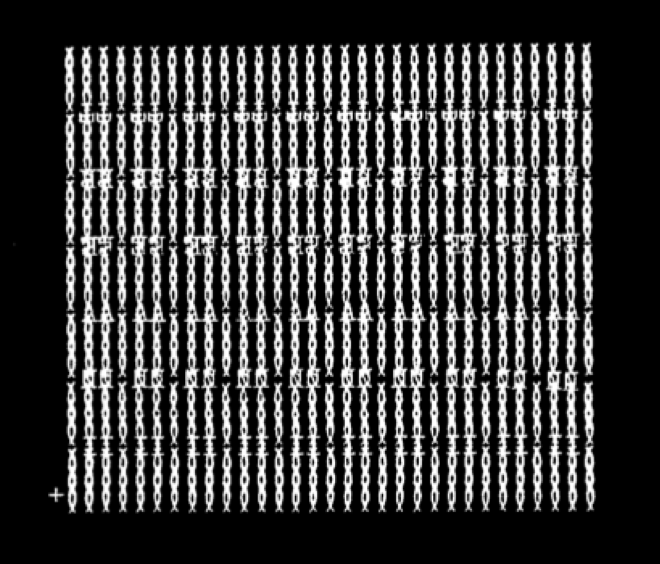
The third section feels the most playful in form, as there are multi-page runs of anagrams which create textual structures of their own. The section opens with a five-page run on the word “Asshole,” each iteration rearranged into new phonic configurations such as “Shaloes,” “Soleash,” and “So / Helas” — these blocks of anagrams contained in proximity to columns of text similar to the textual structures in the first section. This play seems aimed towards experimentation with sense, as the speaker at one point exclaims: “EYE ONE / TUBE EEEEE / ILL LEDGE / A BULL.” Though I am also reminded of the colon/columns from earlier. The textual columns which frame the anagrams imply a continuance beyond the page, that even an asshole is a received word from elsewhere, and therefore capable of teasing into new significations. And the visual play in this final section seems to take on glyphic energy (fig. 2,) a “writing that is not writing,” a “house not a house but a host.” The triangle of O connects parallel, otherwise solitary columns, while also creating a meeting place between them, an opening, delimited by roundness. The O (here and throughout the book) seems to encompass pleasure, pain, a gasp of recognition, of shock, of greeting. I am pulled again to Hejinian’s poetics of encounter and the guest/host relationships formed within. The uttered O brings me into the offered, shared space of the speaker/writer, host/guest, thus nullifying the bounds between the two, or allowing movement between.
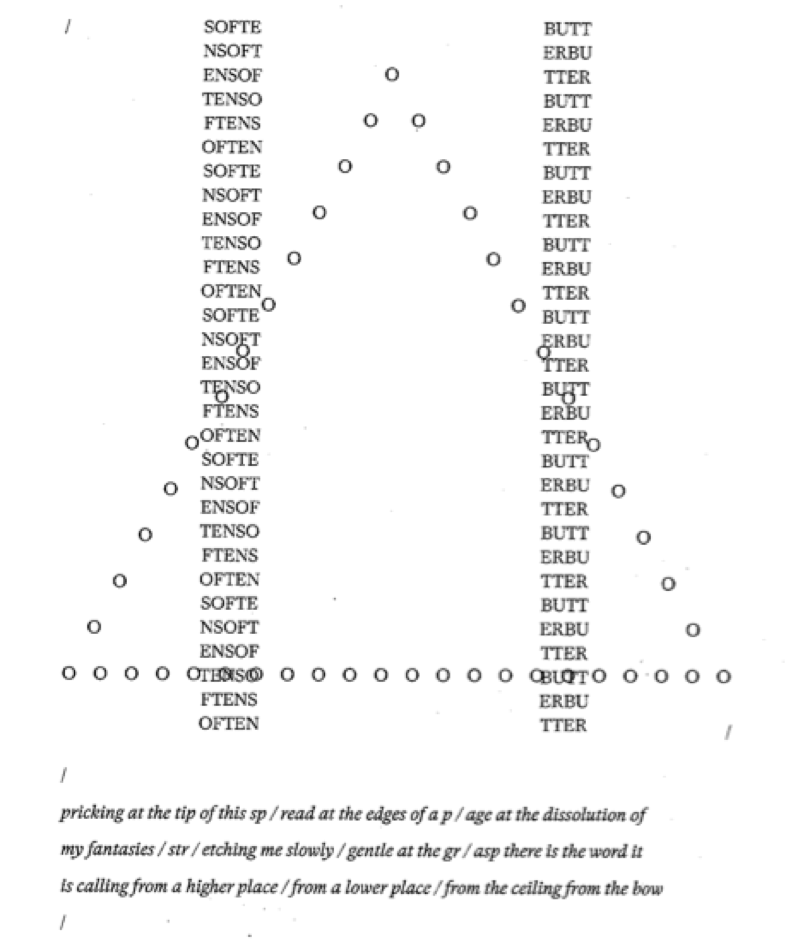
Encountering Active Reception is a playful challenge, a flirt drawn out beyond its limits. I am unmoored by every slash, all ruptured phonetics and syntax, find joy in the multiple routes made possible in and out of sense-making and associative logics. The rupturing becomes a kind of generosity, holes to fill even as I move toward w(hole), too, in the process, splayed open.
Phil Spotswood is a poet from Alabama, and a PhD Creative Writing student at Illinois State University. His most recent work can be found in Berkeley Poetry Review, Always Crashing, and Dreginald. He is the managing editor at Spoon River Poetry Review, and tweets @biometrash.
This post may contain affiliate links.





